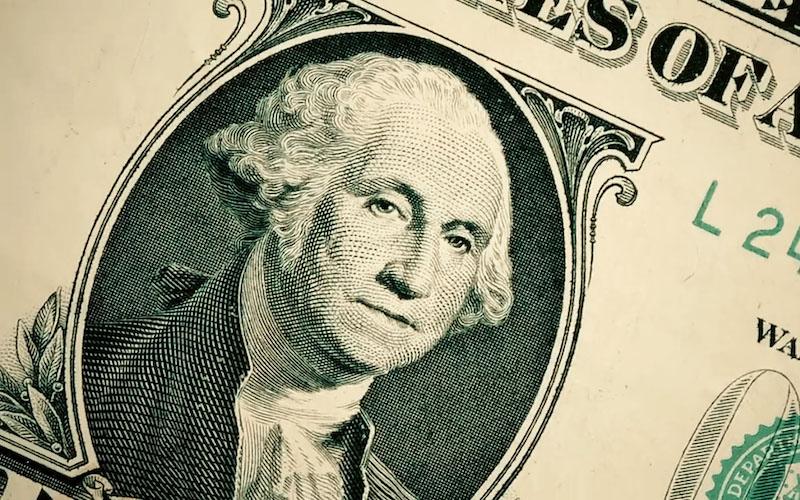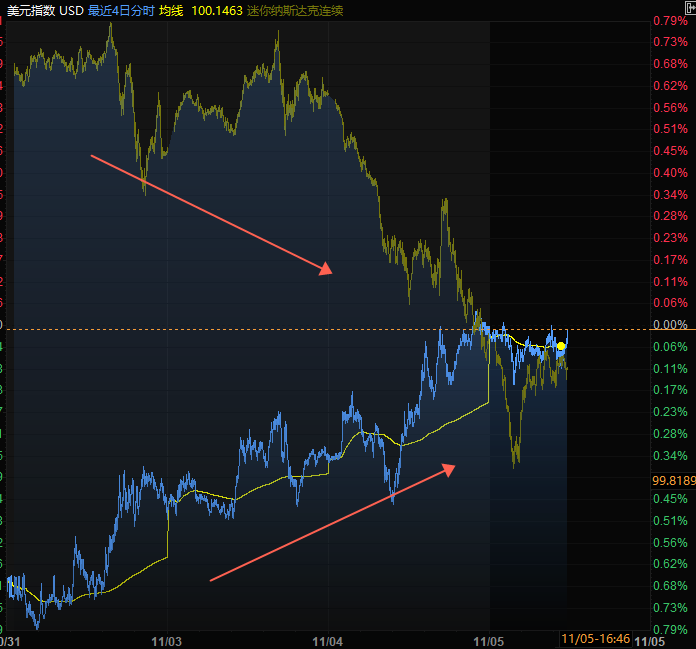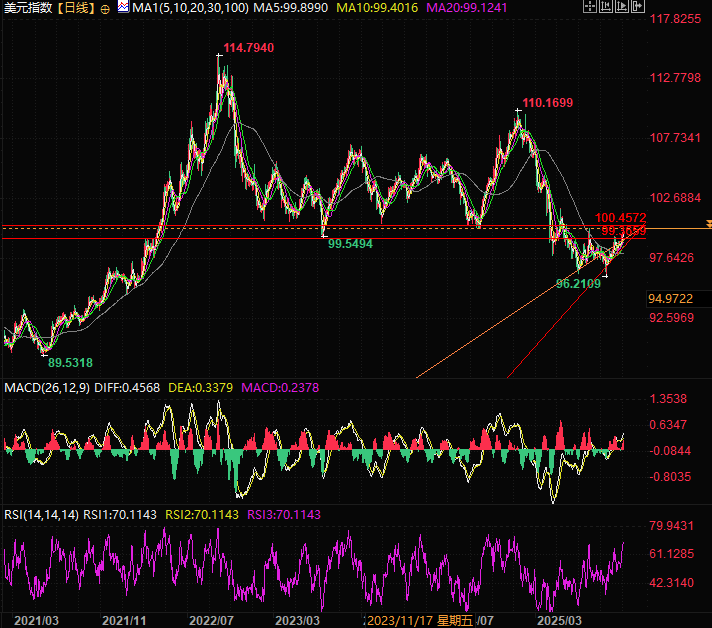AI bubble, escalating power struggles within the Republican Party, who is betraying Trump? The market has already smelled the bloodshed of 2026.
2025-11-05 18:08:16
The 2025 US election is not an election year. This is Trump's first major election after taking office in January 2025. It is different from the presidential election and midterm elections. The election covers key positions and issues in many states.
In Virginia, a key swing state, a reversal occurred as the Democratic candidate defeated the Republican candidate to become the state's first female governor, leading the Democratic Party to achieve full control of the three branches of government (governor, lieutenant governor, and attorney general).
Meanwhile, 34-year-old democratic socialist Zohran Mamdani was elected mayor of New York City with 58% of the vote, defeating the independent candidate supported by Trump. The result is seen as an "early indicator" of voters' opinion on the performance of the Trump administration, which has signaling significance for the 2026 midterm elections and also exposes the divisions within the Republican Party.

The core contradiction following the defeat: blame and alienation within the Republican Party.
President Trump has deliberately distanced himself from the losing Republican candidates, while ordinary Republicans have fallen into a predicament of mutual blame.
All these factors combined led to a storm of mutual blame and accountability among Republicans on election night—the party suffered crushing defeats in Virginia, New Jersey, California, and several other state-level races, and was eager to find someone to take responsibility for the loss.
Disagreements over attribution of defeat: Different interpretations of the "cause of failure"
Trump attributed part of the loss to his absence from the ballot, and posted in all capital letters on the "Truth Social" platform, saying, "Polls show that Trump's absence from the ballot and the government shutdown are the two main reasons for the Republican Party's defeat tonight."
Trump’s closest allies attributed the problem to “the candidates’ lack of qualifications,” while his aides directly targeted Virginia gubernatorial candidate Winsom Earl-Sears and New Jersey gubernatorial candidate Jack Chatarelli.
A Republican and close ally of Trump, Vivek Ramaswamy (the Ohio gubernatorial candidate), believes that the Republican Party has failed to "effectively address the issue of rising costs" and that the public has not felt that the campaign promises of "reducing costs and increasing disposable income" have been fulfilled.
Some Republicans are trying to downplay the impact on Trump, claiming that the losses were due to "higher voter turnout in Democratic-leaning states" rather than voter dissatisfaction with Trump, in an attempt to mitigate the impact on the 2026 midterm elections.
Crushing Defeat Confirmed: Specific Performance of Republicans in Multiple State Elections
The Republican Party's defeat this time was extremely significant, with key results including: Virginia: Democrats swept all three state-level positions and won 13 seats in the state House of Representatives;
New Jersey: Democrat Mickey Sherrell defeated Republican Jack Ciatareli by 13 percentage points and also won several counties that Trump won in 2024;
Pennsylvania: Three Democratic justices successfully retained their seats on the state Supreme Court;
California: Voters pass Proposition 50, which redistricts the Capitol in favor of Democrats;
Georgia (pro-Republican): Democrats removed two Republicans from office in the state public service election.
Key figures speak out: their assessment of the defeat and their campaign strategy proposals.
Chris Lacivita (former Trump campaign manager): believes Earl Sears' poor performance was "self-inflicted," stating that "a bad candidate and an inefficient campaign are bound to have consequences, with the Virginia gubernatorial election being a prime example."
Alex Brütherwitz (Trump ally and head of Super PAC): accused Earl Sears of "not being a Trump ally," urged Republican candidates to "more firmly support the president and fully embrace the 'Make America Great Again' ideal," and said that "nominating moderates with ambiguous stances toward Trump in swing states won't work."
Mike Hahn (New Jersey Republican strategist): believes the New Jersey loss was Jack Çatalelli's "own problem" (three losses, always at risk), rather than a test of public opinion for Trump.
Andrew Corvet (spokesperson for the "Turn to America" organization): argued that Trump should have given more support to Çatalelli (who had been endorsed by Trump), saying that "Trump's endorsement could have boosted his supporters' voter turnout."
The crux of the controversy: Trump's campaign engagement and "alienation"
Few Republicans have criticized Trump for “refusing to campaign in Virginia, New York, and California,” implying that campaigning in traditionally Democratic-supported states could be “counterproductive.”
However, Trump only held a phone campaign event for Republicans on Monday, the day before the election, which highlighted his "alienation" from the party's core candidates—especially Earl Sears, whom he had criticized many times, whom Trump deliberately kept his distance from throughout the event.
Potential impact on capital markets and the US dollar index
The election results, through policy uncertainty and market sentiment, have already had a marginal impact on short-term capital markets and the US dollar index. In the medium to long term, the focus should be on the evolution of policy expectations following the 2026 midterm elections.
From the perspective of the US dollar index, it exhibits a "volatile pattern supported by safe-haven demand" in the short term. Currently, the US dollar index is trading around 100.20. Affected by the internal divisions within the ruling party exposed by the election and the continued impact of the government shutdown, market risk appetite has declined in stages, and the safe-haven attributes of the US dollar have received mild support.
Traders should pay attention to the correlation between the US dollar and risk sentiment. If internal conflicts within the Republican Party intensify and trigger political risks, the US dollar may strengthen due to its safe-haven status. At the same time, the market is focused on the ADP non-farm payroll data to be released at 21:15 tonight. If the data is lower than expected, i.e., the number of new jobs decreased significantly, it may raise market expectations for a Fed rate cut, thereby suppressing the US dollar index.
Meanwhile, the Republican defeat reinforced expectations of increased resistance to the implementation of economic policies. Public dissatisfaction with rising costs and internal party disagreements on economic issues could weaken the efficiency of subsequent fiscal stimulus or reform plans. The government shutdown, which resulted in the absence of key data such as non-farm payrolls, has reduced the expectation of a Fed rate cut in December from 95% to 67.3%. Policy uncertainty has further amplified the volatility of the US dollar.
In the US stock market, the Democratic victory in key states triggered a shift in expectations for certain sectors: the election of the left-wing candidate in New York City raised concerns on Wall Street about increased corporate taxes and tighter regulations, putting short-term pressure on technology stocks;
In swing states like Virginia, where "cost-of-living issues" were prioritized, defensive sectors such as consumer staples and utilities attracted safe-haven funds.
Overall, this election, which is not a general election year, is more like a "litmus test for market expectations." The two major signals it revealed—"economic and livelihood anxieties" and "intensified political divisions"—have shifted the US dollar and US stocks from "trading on policy certainty" to "pricing against uncertainty." The key focus going forward will be on how the Fed's December interest rate decision and inflation data validate this logic.
Technical aspects:
Influenced by the US AI bubble rhetoric and the election, the US dollar received safe-haven buying, and the dollar index closed above the 100 mark.

(Overlay chart of the US Dollar Index and the Mini Nasdaq Index)
If the US dollar index can hold above 100, the market may perceive it as being in a bullish range, attracting buying interest. Both MACD and RSI are bullish. The current resistance level is at 100.45, and the support level is around 99.88, near the 5-day moving average. However, from a broader perspective, the current rise in the US dollar index has been too short and still appears to be a rebound after a significant decline.

(US Dollar Index Daily Chart, Source: FX678)
At 17:54 Beijing time, the US dollar index is currently at 100.20.
- Risk Warning and Disclaimer
- The market involves risk, and trading may not be suitable for all investors. This article is for reference only and does not constitute personal investment advice, nor does it take into account certain users’ specific investment objectives, financial situation, or other needs. Any investment decisions made based on this information are at your own risk.





















